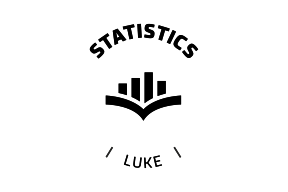Record-breaking pea harvest on Finnish fields in 2022 – cereal harvest slightly larger than average
The Finnish field area is 2.2 million hectares, comprising about 7 per cent of all land area in Finland. Last autumn, as usual, several combine harvesters, mowers, potato and sugar beet harvesters and other harvesting machines helped harvest the annual crops of about 40,000 Finnish farms. The 2022 harvest was a subject of particular interest, as the 2021 harvest was the scarcest in decades for nearly all crops.
Average cereal harvest
The autumn 2022 cereal harvest was slightly larger than average, 3.6 million tons. The barley harvest amounted to almost 1.5 million tons, and the oat harvest about 1.2 million tons. The wheat harvest totalled 850,000 tons and the rye harvest 65,000 tons.
As the annual cereal consumption in Finland is approximately 2.8 million tons, the total cereal harvest is statistically sufficient. About 300,000–400,000 tons of oats have been exported abroad annually, and this is also likely for our oat harvest in 2022. However, rye harvest is quite scarce compared to annual consumption, only covering about 70 per cent of the demand. The quality of the cereal harvest is good and has been determined by the Finnish Food Authority based on samples delivered to it by the farmers.
‘Of the total grain harvest, organic cereals accounted for roughly five per cent. Quantitatively, of all the cereals, oats are produced organically the most. The organic oat harvest amounted to 107,000 tons, which equals nearly nine percent of the total oat harvest. For the rye harvest, 15 per cent – 9,000 tons – was organic rye,’ says senior statistician Anneli Partala from the Natural Resources Institute Finland (Luke).
Record-breaking pea harvest – great demand for feed pea
Pea production in Finland has taken some major leaps. Its field area has more than tripled in four years. The field area of pea surpassed that of sugar beat in 2019, the field area of potato in 2020, and the area of turnip rape in 2022. And with about 92,000 tons, the latest pea harvest is the largest recorded. Most of this is feed pea, meaning that the harvest will be used to feed farm animals, either directly or as part of industrial feed. Pea replaces soy or other fodder with high protein content in animal feed.
Nearly half of our fields grow green fodder
Our grass harvest is an important source of animal fodder for Finnish farms. About one third, i.e. 600,000 hectares, of our fields grew green fodder. Silage fodder is the most important green fodder, and its harvest yielded a total of about eight million tons. Out of all the crops included in the statistics, the quantity of green fodder is the most difficult to estimate. In most cases, it is not traded commercially. This means that the farm’s own level of demand – the estimate of how much feed the farm’s animals will need before the next harvest – often determines the quantity of green fodder production.
Crop Production Statistics are official Finnish statistics
Crop production has been recorded annually in Finland for more than a hundred years. According to section 2 of the Act on Food and Natural Resources Statistics (27 June 2014/562), Luke will produce and publish the crop production statistics. The harvest statistics consist of information obtained from farms, which results in the Crop Production Statistics (OSF statistic). The OSF status of statistics guarantees that the statistics are available to everyone at the same time and people are also informed in advance on when the statistics will be ready.
The crop production statistics information was obtained in November from roughly 5,000 farms, of which 500 were organic farms. The statistics home page has more details about the harvest information of all key crops, and the statistics database has harvest data available from the whole country since the 1920s and regionally from the different Centres for Economic Development, Transport and the Environment since 1999. Information about organic harvests has been available from 2006.
Statistical publication
Read more on this topic
- Subscribe to releases
- Finnish Grain Quality and Safety, Finnish Food Authority
- Utilised Agricultural Area
- Structure of agricultural and horticultural enterprises
- Cereals balance sheet
- Horticultural Statistics 2022
- Balance Sheet for Food Commodities
- Statistic on the purchase, use and storage of cereals and protein and oilseeds
- Foreign trade in agri-food products


